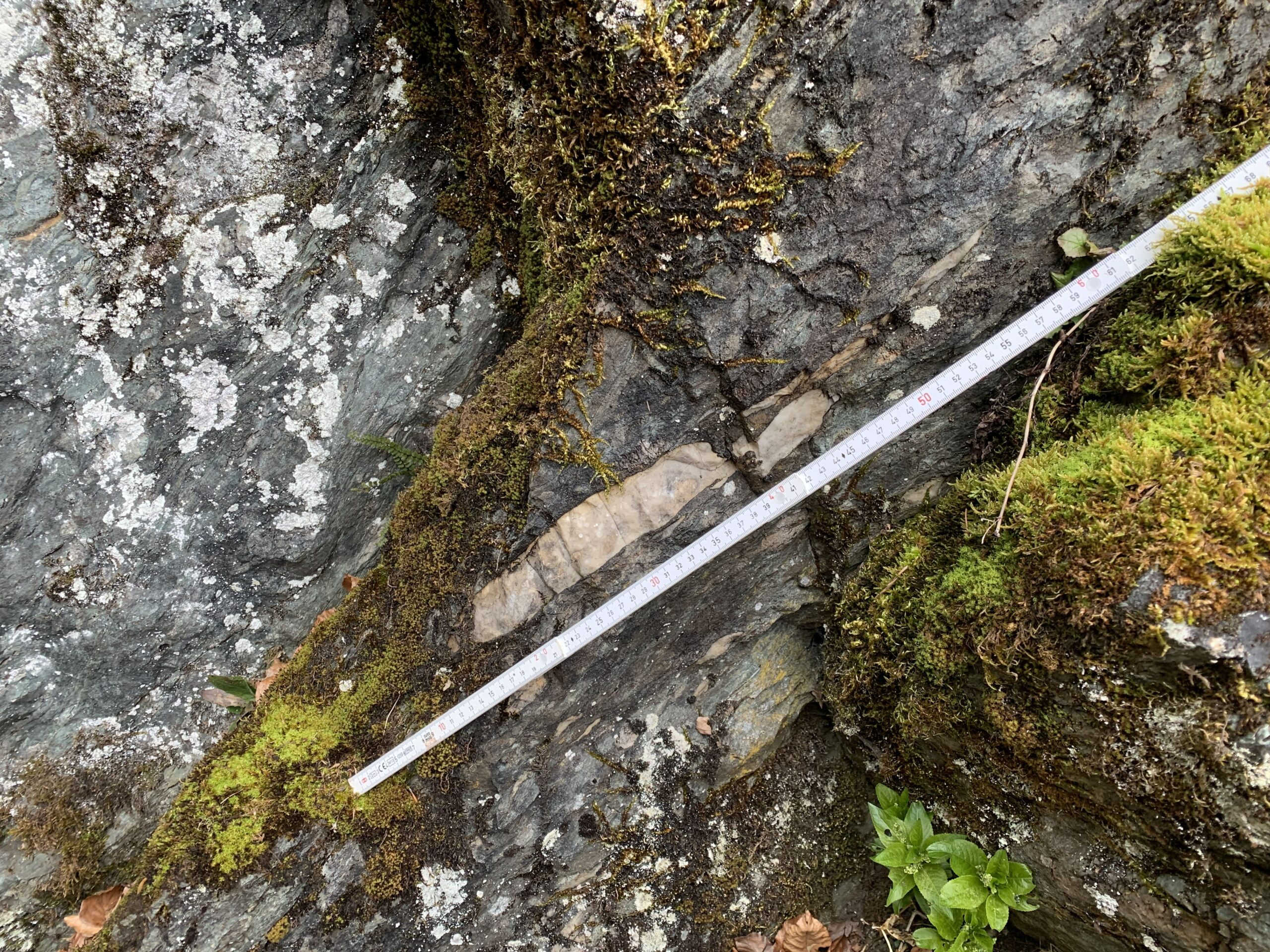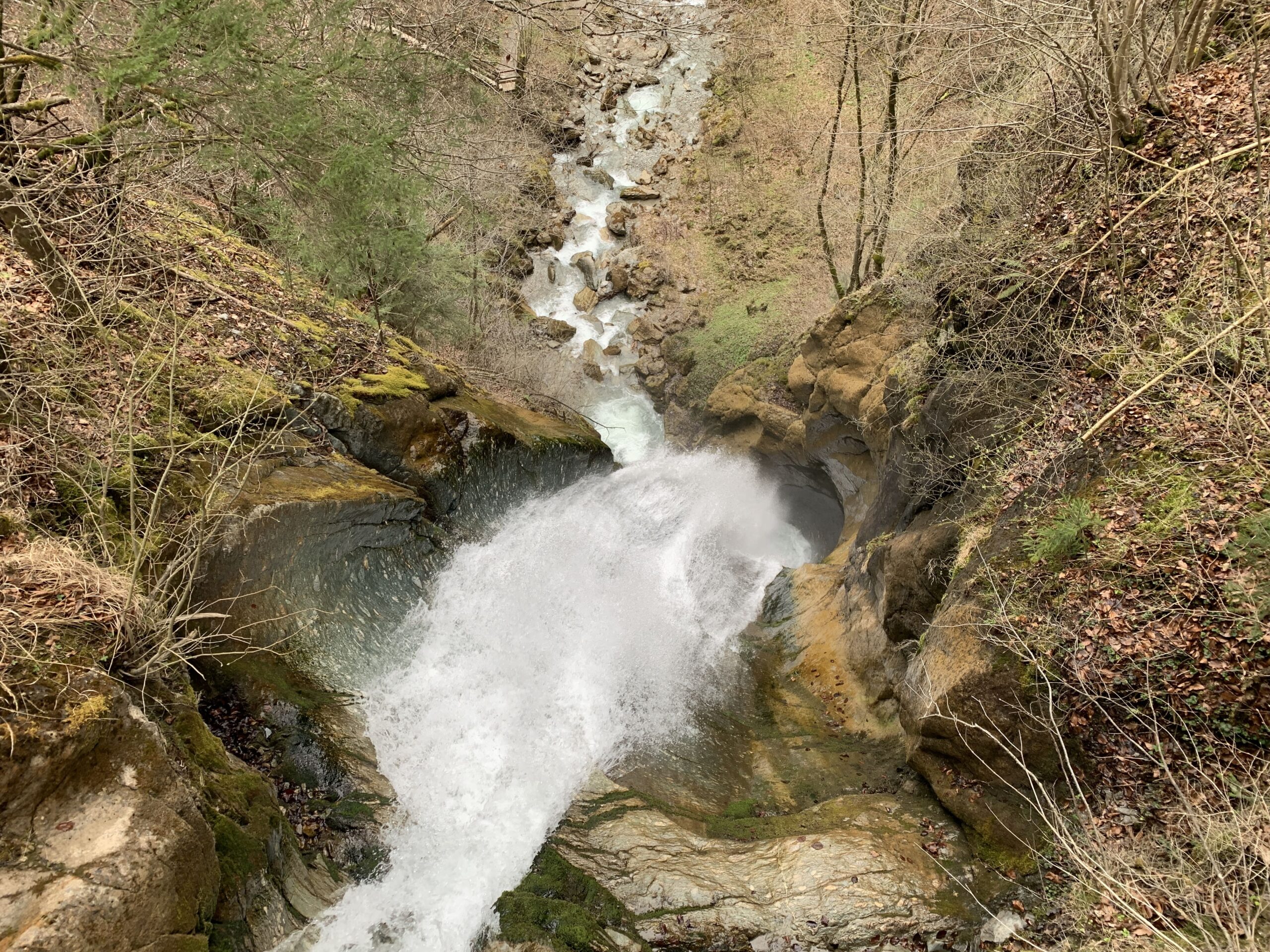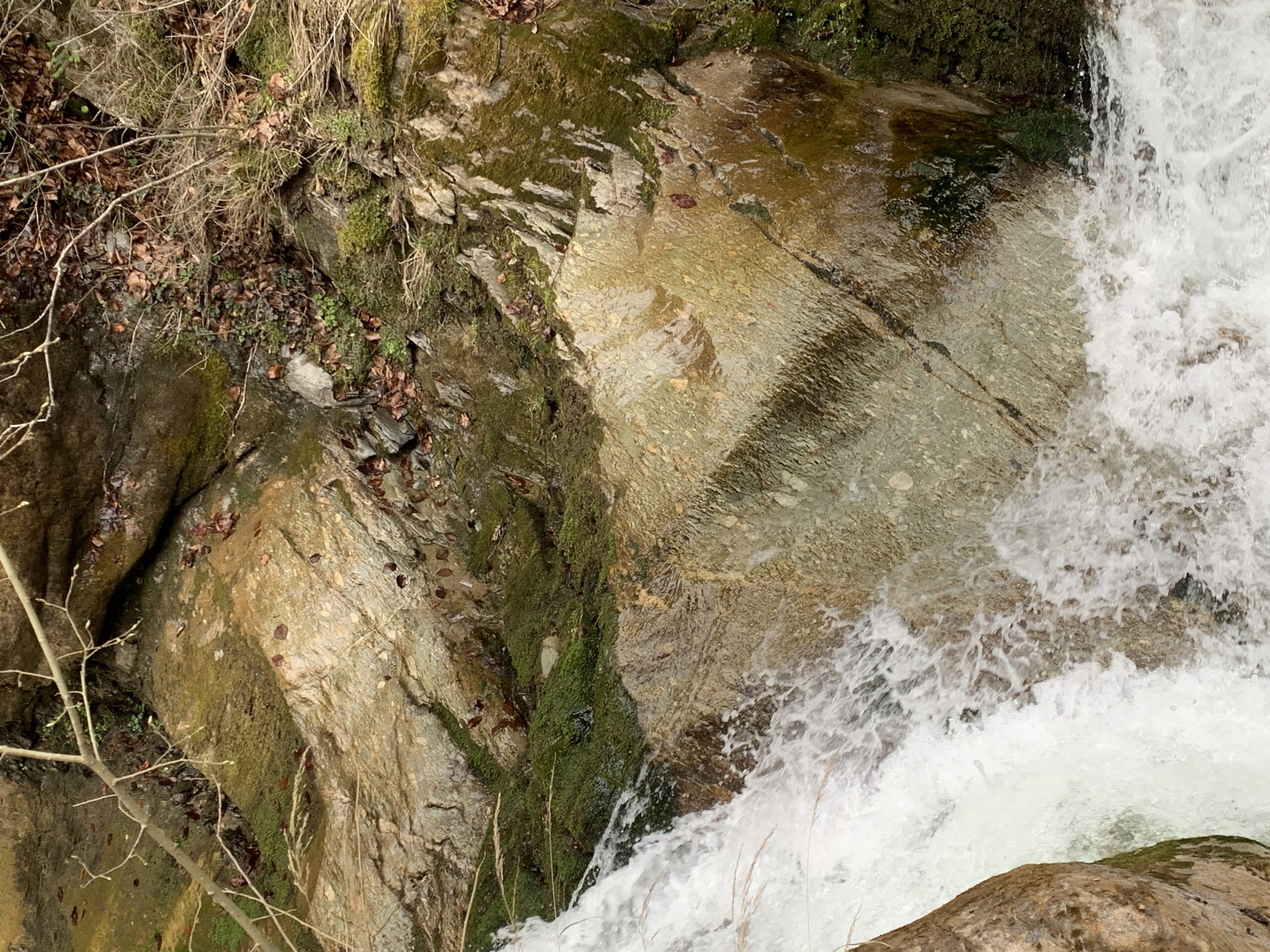Gainfeld Conglomerate
A conglomerate about 310 million years old!
The resistant rib forming the waterfall
is composed of the so-called Gainfeld
Conglomerate. The Gainfeldbach is the
eponymous locality of the rock (locus
typicus). In geology, rock names are
often designated based on the location
where they were first described. In the
Geopark, there are many designations
that carry local names, such as the Werfen
Formations or the Dachstein Limestones.
The Gainfeld Conglomerate is a coarse
conglomerate composed of pebbles and
cobbles consisting of quartz, quartzites,
gneisses, and marbles.
The clasts are
often tectonically elongated or stretched,
as seen in the illustration. The Gainfeld Conglomerate originated
in the Upper Carboniferous (about 310
million years ago), is partially associated
with copper ore veins, and is remarkably
hard and tough, thus difficult to erode.
It is responsible for the terrain step at
the waterfall. The polished state of the
Gainfeld Conglomerate is clearly visible
below the waterfall bridge due to the
action of water.
Kids
What is a conglomerate?
Conglomerates are rocks that consist of large, round pieces surrounded by finer grains. The large pieces - called "clasts" - can range from the size of a pea to the size of your fist and even much larger!
The clasts are pieces of rocks or minerals that originally came from different places! Sometimes the rocks are so large that you can practically recognise what type of rock they are. Natural elements such as water, wind and ice contribute to rocks breaking up into smaller pieces, which are then carried to a new location by strong water currents and gravity. Finally, these pieces are held together by finer sand or mud.
What is a conglomerate?
Conglomerates are sedimentary rocks consisting of large, rounded particles called clasts surrounded by finer grains of sand and silt, collectively known as the matrix. The clasts can range from the size of a pea (also known as granules) to the size of a boulder. Conglomerates are termed poorly sorted because their grains are not uniform in size.
The rock fragments of a conglomerate are fragments of rocks or minerals that were originally formed in different places. Weathering breaks them down into fragments called sediments, which are then transported to a new environment by strong water currents and gravity. During transport, the sediments collide with each other or with the earth's surface, rounding off their sharp edges. Finally, they are deposited in a new location and lithified, i.e. compressed, with finer materials.
What is a conglomerate?
Conglomerates are sedimentary rocks consisting of large, rounded particles called clasts surrounded by finer grains of sand and silt, collectively known as the matrix.
The clasts can range from the size of a pea (also known as granules) to the size of a boulder. Conglomerates are described as poorly sorted because their grains are not uniform in size.
The rock fragments of a conglomerate are fragments of rocks or minerals that were originally formed in different places. Through weathering, rocks are broken down into fragments or even into their individual components. The products of weathering, known as sediments, are then transported to a different environment. Large sediments require large amounts of energy to transport them. Fast and turbulent rivers, such as those that flow down steep slopes or during flash floods, can sweep these large fragments along with finer ones. Due to their size and density, the large rock fragments settle much faster and are "left behind" by the flowing current. Finally, they are lithified with finer materials, i.e. pressed together and compressed.
The roundness of the rock fragments is an indicator of the distance they have travelled, with rounder grains indicating a greater distance from their original location. During transport, the sediments collide with each other or with various surfaces (e.g. the river substrate), causing their once sharp edges to be abraded and rounded.
Conglomerates are similar to another sedimentary rock, the breccia. However, breccias contain angular rock fragments, which indicate a shorter transport distance, as the rock fragments did not have enough time to be polished.



